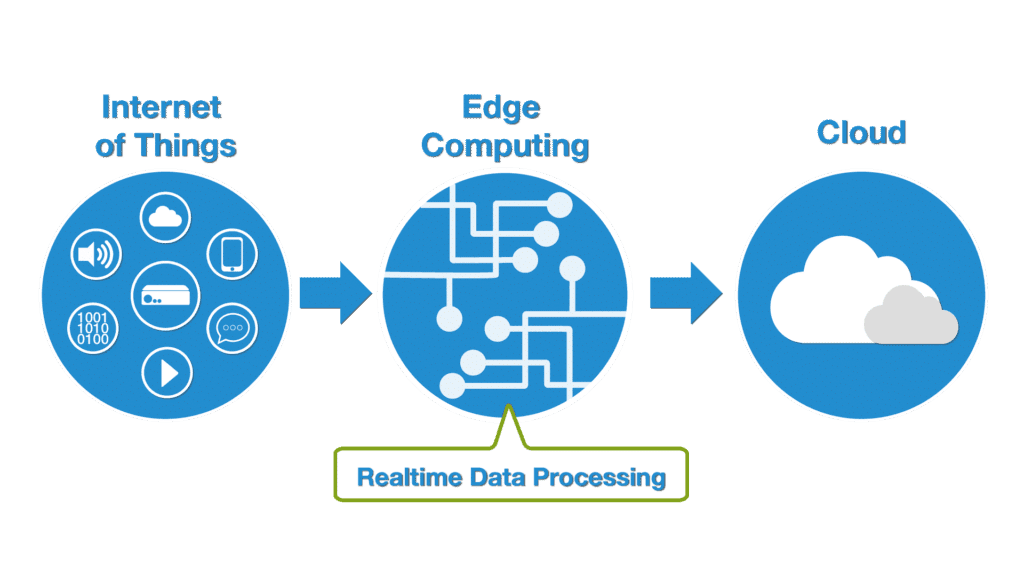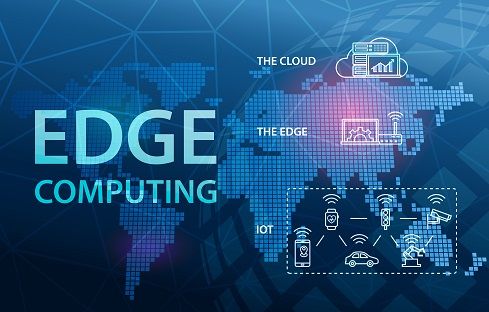How Edge Computing Can Help Secure the IoT
A new reconfigurable security solution that defeats currently available solution in protecting Internet of things (IoT) devices and data by exploiting edge computing. The concept mentions to the calculation of data that occurs right where the data is generated, i.e. “at the edge” of the IoT network. As per IDC by 2020, the IT spend on edge infrastructure will reach up to 18% of the total spend on IoT infrastructure.
So, rather having a centralized, remote cloud to do all the task, the data is managed and reserved locally, i.e. on the IoT device itself or at the nearby network node.
But how does edge computing exactly work?
To describe how it works in real life, we can consider any smart device out there as an example. Every IoT sensor generates tons of data every second. In the case of cloud computing, the data is immediately moved to the central, united cloud database where it’s handled and stored. If there is any specific action needed, the central server will send its particular response back to the device upon receiving and examining the acquired data.
While the entire process generally takes less than a second to complete, there might be circumstances when the response may be delayed or suspended. This can be arise due to a network flaw, weak internet connection or merely because the data center is placed too far from the device. Whereas, in case of edge computing, you don’t require to send the data received by the IoT sensors anywhere. The IoT device itself or the nearby network node is behind data processing and can respond in an exact manner if a specific action is needed.
In 2014, Hewlett-Packard evaluated that almost 70% of IoT devices were easily Hackable. While the general security solution would be an on-system password, this is no longer sufficient to halt dedicated hackers from acquiring access to a network of IoT devices.
The IoT’s existence and accuracy rely on its capability to deal with security. But what is the better way for an IoT network to deal with security?
Edge Computing Offers a Solution
General Electric Digital observes that edge computing sources have a lot of processing abilities now and can be used for processing and filtering of data at basic locations. This is what the IEEE paper presents, using these edge systems to perform the processing required to evolve a strong security architecture that can help to bring a secure IoT to us all.
By utilizing edge systems to produce cryptographic keys and handle the security of the network, the IoT systems become more secure via the simple adoption of edge computing. In order to do this, the edge system would require having security agents (the locally-arranged edge devices are called a ‘security agent’ and are responsible for handling the security of the local IoT devices connected to it) on each of the IoT Network system that execute the dedicated task of handling security and communicating with the edge server.
Flexibility, Cost Effectiveness
This solution of using Security Agents is appealing for a various reasons. The system is flexible, allowing already deployed IoT devices to utilize the feature by directly pushing a Security Agent to their architecture from the edge servers. This means that the amount would be the same since no additional features or hardware requires to be added to the IoT device, thereby defining the security system.
As we can see, the main cause of edge computing is to decentralize data handling. This shows to different advantages over the traditional cloud.
Specifically, there are 5 main benefits of edge computing for IoT.

1. Improved data security
While IoT solutions appeared to be a main target of cyber attacks, edge computing can support you secure your networks and enhance overall data privacy. This perspective is also preferred in terms of GDPR compliance: the less sensitive information is sent through your IoT network and reserved in the cloud, the better secure your network will be.
Edge computing can eliminate latency concern by pushing essential data processing to the edge of the network as it works on the principle of a more distributed network, which makes sure that there is no disconnect in real-time information managing and gives a more absolute network.
2. Better Application performance
As described above, it takes some time for the data to travel back and forwards between the device and the data center. By storing and processing the data to its nearby source, it will minimize the lag time and improve the overall Application performance. As a result, you can easily monitor the data in real-time, without delays.
3. Decreased operational costs
As IoT is all about generating huge amount of data, when you store and operate most of the data at the edge, you don’t require a large quantity of cloud storage. In addition to that, you can strain out the not required information and backup only the suitable data. As a result, your infrastructure costs will automatically go down which will increase your ROI.
4. Improved business efficiency and reliability
Lower data traffic and decreased cloud storage, in turn, lead to more structured business operations. Today’s retailers depend on a 24/7 online presence to provide superior customer experiences. Edge computing can prevent sites electrical failures and increase availability for optimal site up-time. And for healthcare professionals, edge computing can locate computing nearby to an IoT device, such as a heart-rate monitor, assuring reliable access to perhaps life-saving, health-related data.
5. Unlimited scalability
Unlike cloud, edge computing enables you to scale your IoT network as per requirement, without reference of the available storage (or its costs). As it is depends on edge server control, the methodology is extremely scalable and can be utilized in as many locations as necessary, once there’s an edge server to help the IoT devices in that location.
The Future of IoT is at the Edge
By 2022, 75% of industry data will be processed outside of the cloud (as well as traditional data centers), as per Gartner. As a result of this the size of the edge computing market will exceed $13 billion worldwide within the same timeframe. IoT devices generate a enormous amount of data and Edge computing resumes to perform a important role in processing all of it promptly and effectively.
As per the study from the International Data Corporation (IDC), 45 % of all data generated by IoT devices will be collected, processed, examined and acted upon near to or at the edge of a network by 2020.
Taking into account the current trend, IoT developers and business owners should adopt edge computing for their upcoming IoT products.
So, if you are in thought of investing in IoT development or want to upgrade your current products, start with a reliable technology partner like hIOTron which will help you to traverse the pitfalls along the way.

